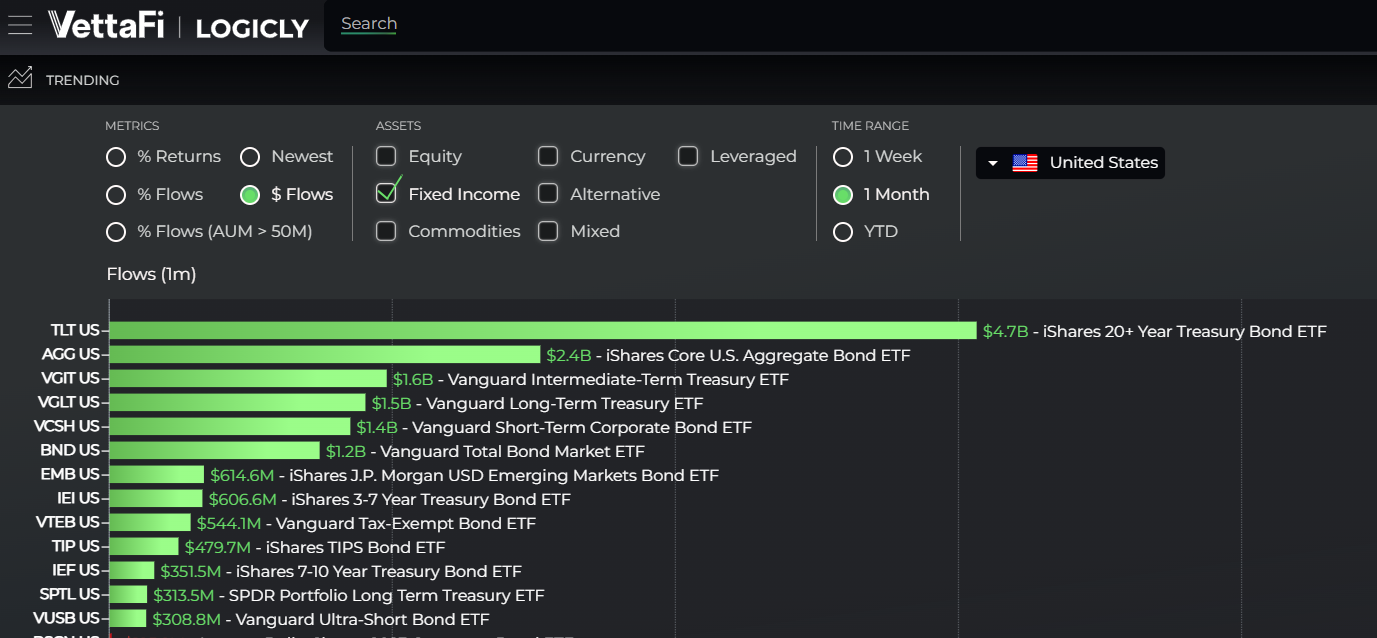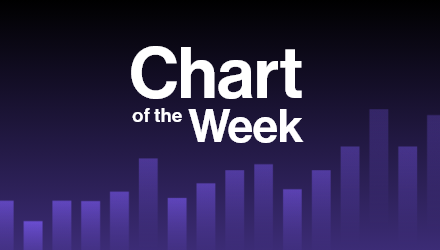Equity ETFs were back in vogue in July gathering $43 billion of net inflows, yet fixed income remains highly important to advisors. The typically safer asset class added $17 billion of its own. Furthermore, at last week’s VettaFi Fixed Income Symposium, more than 700 people virtually attended to get up to speed on the bond market and the available investment opportunities. (Catch a replay today). However, many of them recently made either strategic or tactical moves within the fixed income asset class.
VettaFi asked attendees to describe their recent portfolio changes in the last three months. The top two most selected choices were “bought more fixed income, sold equities” (26%) and “changes within fixed income but kept exposure the same” (25%). Far fewer people “bought more equities, sold fixed income (10%).” Some, but not many, people kept their portfolios static.

Advisors have increasingly gained comfort in the advantages of index based fixed income ETFs. Relative to mutual funds, the ETFs offer greater style purity, have stronger liquidity, and lower fees. Compared to owning bonds directly, they provide diversification and ease of use benefits. Furthermore, many companies like BlackRock, DoubleLine, and PIMCO have recently launched active ETFs run by some of their best bond mutual fund managers.
What Fixed Income ETFs Were in Favor in July?

In July, three broad market index ETFs were particularly popular. The two largest taxable bond ETFs, the iShares Core US Aggregate Bond ETF (AGG) and the Vanguard Total Bond Market ETF (BND) added $2.4 billion and $1.2 billion, respectively, according to VettaFi’s LOCIGLY data. Meanwhile, the Vanguard Tax-Exempt Bond ETF (VTEB) pulled in $545 million. These three ETFs form the core for many taxable and tax-exempt based client portfolios.
Last month, we also saw strong demand for long-term Treasury ETFs. The iShares 20+Year Treasury Bond ETF (TLT) was the industry’s most popular fixed income ETF. TLT added $4.7 billion. In addition, the SPDR Portfolio Long Term Treasury ETF (SPTL) and the Vanguard Long-Term Treasury ETF (VGLT) were among the ten fixed income ETFs with the largest monthly cash hauls.
Advisors using AGG or BND as the core of the portfolio have an average duration of 6.5 years. However, many people expect that the Federal Reserve is likely to again halt the rate hiking program they are willing to add duration. During VettaFi’s Fixed Income Symposium, 67% of respondents believed rates would be lower a year from now as opposed to higher.
Investors Also Looking to Emerging Markets for Income
In addition, the iShares JPMorgan USD Emerging Markets Bond ETF (EMB) pulled in $1.4 billion for July. With an SEC yield of 7%, EMB provides exposure to sovereign bonds from Brazil, Mexico, Turkey and other still developing markets. EMB recently had approximately 45% of assets in bonds rated BB or lower, adding credit risk. While core bond ETFs have exposure to U.S. government and corporate bonds, EMB provides diversification through a different income stream.
To fund some of these positions, investors reduced exposure in July to some short-term Treasury ETFs. The iShares 1-3 Year Treasury Bond ETF (SHY), the Schwab Short-Term US Treasury ETF (SCHO), and the SPDR 1-3 Month T-Bil ETF (BIL) had net outflows of $4 billion combined last month.
Using ETFs, advisors are able to maintain their exposure to fixed income by rotating to take on additional risk in an attempt to generate additional total return. Through July, U.S. listed fixed income ETFs $117 billion of net inflows, equal to 42% share of the industry’s cash haul and more than double its share of assets.
For more news, information, and analysis, visit VettaFi | ETF Trends.

